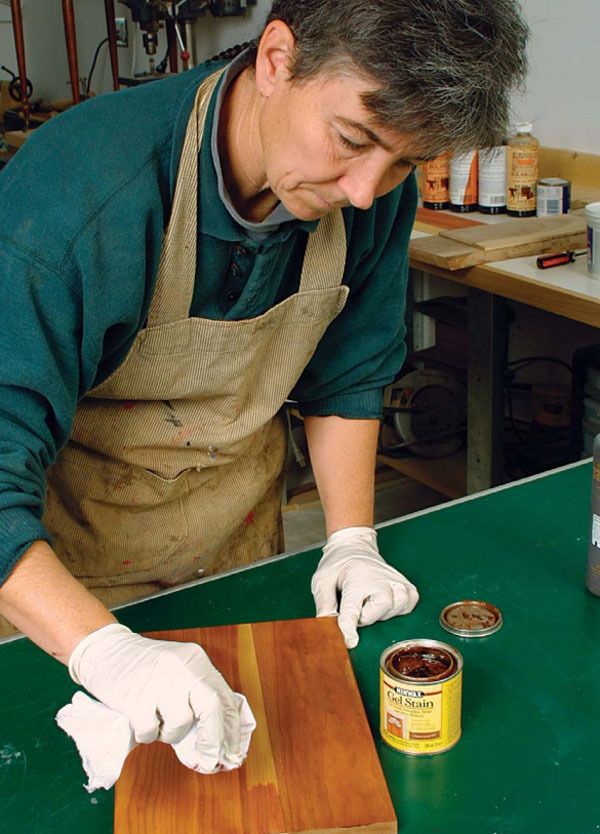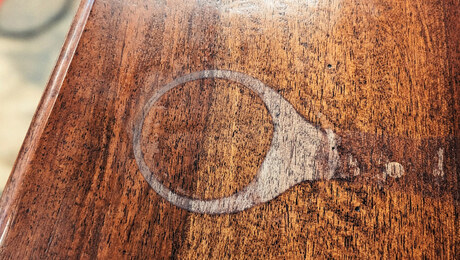How to Conceal Sapwood
Use gel stains, dyes and pigments to refine cherry and walnut
Synopsis: Must furniture makers and woodworkers resign themselves to ignoring the increasing amounts of sapwood in cherry and walnut boards? Should they cut it out or use only narrow boards? By using gels, dyes, and pigments, Teri Masaschi describes how to use and conceal sapwood to retain the beauty of the wood. Step-by-step instructions and photographs detail how to use various techniques to hide or blend sapwood into surrounding heartwood.
A few years ago, cherry boards containing sapwood were the exception at reputable lumberyards. Now they seem almost the rule. Increasingly, furniture makers are faced with a dilemma: Do they waste growing amounts of an ever more expensive product by cutting off the sapwood, use only narrow boards or resign themselves to unsightly streaks of sapwood in their work?
The solution is to color the sapwood so that it blends in with the heartwood. There are a number of different ways to stain, dye, glaze and seal sapwood. While I will use cherry for most of my examples, I also will show a method for concealing walnut sapwood, because sapwood is appearing more regularly in both cherry and walnut stock available today.
For a natural look, color only the sapwood
The popularity of the natural look on finished cherry has made hiding sapwood more difficult. There are three methods to blend in the sapwood without darkening the whole board.
Combine gel varnish and gel stain— For a light, natural cherry look, wipe a clear gel varnish over the entire surface and then match the sapwood to the heartwood using a gel stain. It is quite likely that the commercial gel stain won’t be an exact match with the heartwood. Blend Japan colors or artist’s oil colors with the oil-based gel varnish to get a perfect match. Don’t worry if the stain is too light; repeated applications will make the sapwood darker.
Brush away the sapwood— Dye stains applied with an artist’s brush are a great way to blend in small streaks of sapwood, especially if the aim is to have a natural final appearance for your workpiece. Waterbased dyes can be used, but they have the side effect of raising the grain. Instead, you may opt for alcohol-based non-grainraising (NGR) dyes, which are fast drying and come premixed.
On a piece of scrapwood that closely matches the workpiece, wet the area surrounding the sapwood with a solvent such as mineral spirits or naphtha to get a better idea of what the wood will look like with a clear finish. This will dictate the color that the sapwood needs to match. Using this sample board, choose a dye that most closely matches the wet heartwood, combining two or more colors, if necessary (I used amber fruitwood and golden oak in this example). Carefully brush the dye on the sapwood and check the color. If it is too dark, wipe the sapwood with a rag dampened with denatured alcohol to lighten the dye. Rewet the surrounding area to compare the match. If the colors are close, go forward with a clear sealer coat.
From Fine Woodworking #161
For the full article, download the PDF below:
Fine Woodworking Recommended Products

DeWalt 735X Planer

Ridgid R4331 Planer

Foam Brushes






















Log in or create an account to post a comment.
Sign up Log in